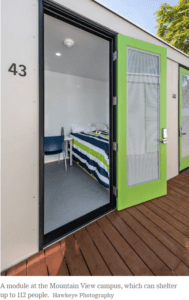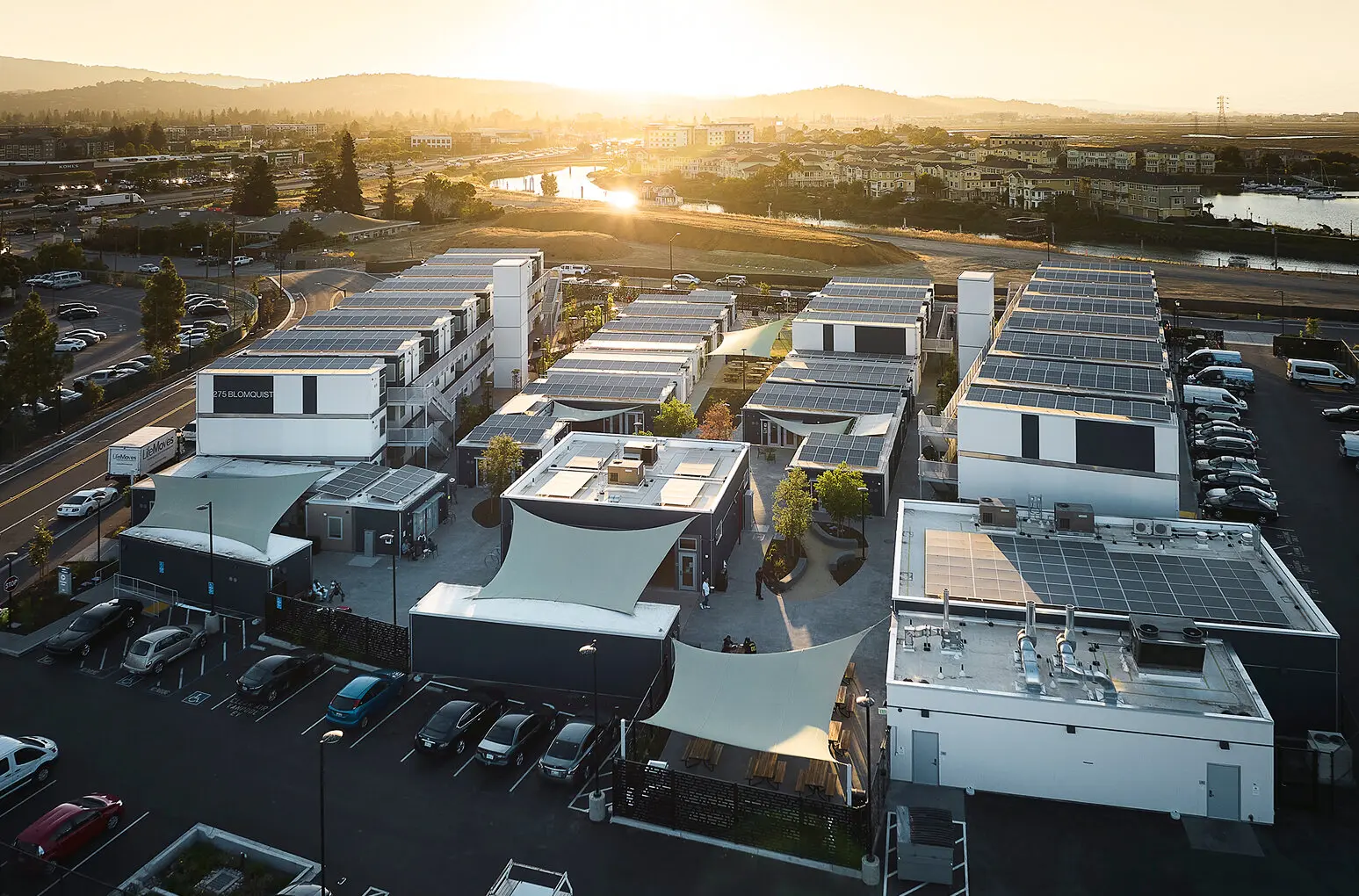Read the following article from The New York Times, detailing how California’s homeless shelters are evolving in response to the state’s housing crisis, offering new solutions that aim to restore dignity and community for those struggling to find stable living conditions.
By: Jane Margolies
Prefabricated modular campuses in Northern California are offering comforts that may help keep people off the streets — with pets, possessions and private space in mind.
Even before the pandemic, some large homeless shelters in and around San Francisco were not cutting it.
The dormlike settings offered no privacy, no room for possessions and no place for pets — “the three Ps,” said Charles F. Bloszies, an architect and engineer whose namesake firm worked on the Embarcadero Navigation Center in San Francisco and other congregate facilities in Northern California.
Another drawback was that essential services were often located elsewhere, so that someone who did spend a night in a shelter often had to take a bus or subway to a clinic or government office and might decide not to complete the trip, instead falling back into life on the street.
The upshot was that many people in need stayed away or would not stick around long enough to get their lives back on track.
“We had more homeless on our streets than in our shelters,” said Mike Callagy, the executive of San Mateo County, an affluent area south of San Francisco.
Then the pandemic made living with strangers in congregate settings even more problematic.
So San Mateo and three other Silicon Valley localities are trying a different approach. Working with LifeMoves, a nonprofit service provider, and using a concept conceived by the Office of Charles F. Bloszies, they are building tidy campuses with modules containing individual sleeping units so that each person has their own tiny room — with a door that locks.

Stay Connected!
Receive stories of hope and transformation from LifeMoves.
By joining our list, you agree to receive informative emails and mailings about LifeMoves.



